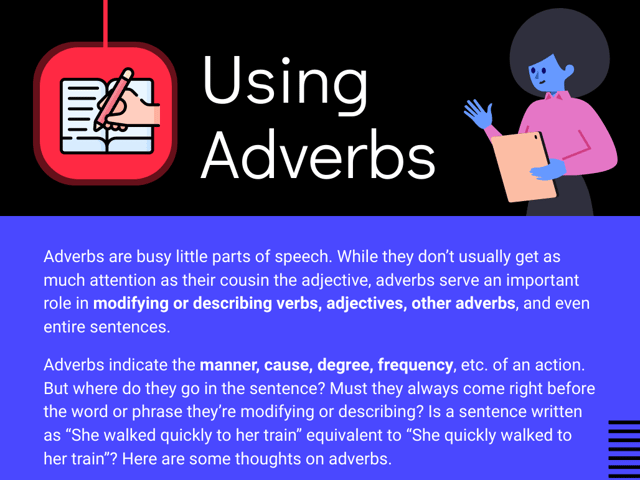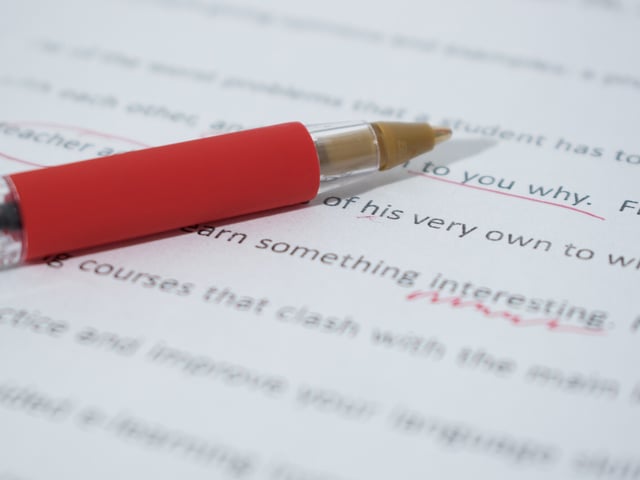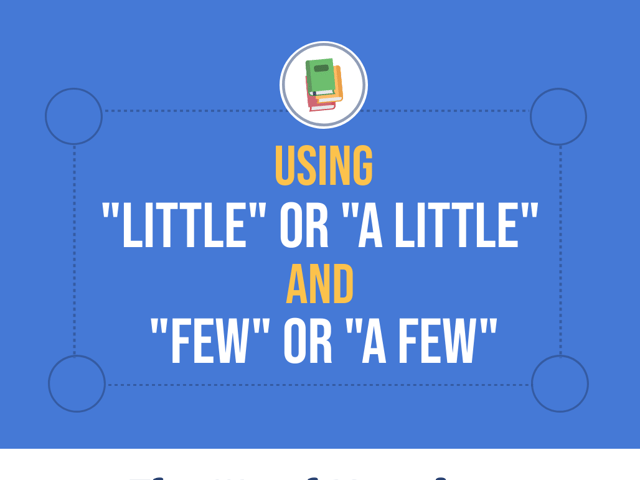
How to Use Adverbs
Adverbs are busy little parts of speech. While they don’t usually get as much attention as their cousin the adjective, adverbs serve an important role in modifying or describing verbs, adjectives, other adverbs, and even entire sentences.
Adverbs indicate the manner, cause, degree, frequency, etc. of an action. But where do they go in the sentence? Must they always come right before the word or phrase they’re modifying or describing? Is a sentence written as “She walked quickly to her train” equivalent to “She quickly walked to her train”? Here are some thoughts on adverbs.
Adverb Placement Options
Adverbs help to describe how, when, where, to what extent, or in what way something happens. Often ending in -ly, adverbs give more description and specificity to events. While usually placed near the word they modify or describe, adverbs and adverb phrases can go at the beginning, middle, or end of a clause. Here are some examples of different adverb placement:
Sometimes Kayla eats ice cream for dinner.
The presenter opened the envelope carefully.
He has never traveled outside the country.
Caution for Adverb Placement
It is important to note, however, that the placement of an adverb can affect the overall meaning of a sentence, and the emphasis may change. For example, consider this sentence:
My school was just selected to receive the state grant.
That sounds like the news was recently announced, so it’s relating to time. But look what happens when the adverb just gets relocated:
Just my school was selected to receive the state grant.
Now the just indicates an only, no other school was selected. Or the sentence could be written:
“My school was selected to receive just the state grant.”
This version makes it sound like there were other grants available and this school only received one, and the excitement and pride evident in the first sentence has completely fizzled out. Adverbs wield a lot of power.
A General Adverb Placement Guide
Like adjectives, which sound right when they are used in a particular order, adverbs also have a hierarchy and make more sense when used in particular locations within a sentence. And, while you likely wouldn’t use all five types of adverbs in one sentence, if you did, they should come in this order:
-
Manner (shows how something is done)— “The kids quickly ran to the ice cream truck.”
-
Place (indicates an aspect of direction, movement, or position)— “Everywhere we looked there were feathers flying.”
-
Frequency (tells how often)— “Dora always packs her lunch before she leaves for work.”
-
Time (explains when or for how long)— “Lisa still sings her son to sleep every night.”
-
Purpose (identifies why or how something happens)— “We arrived late to the theater; therefore, we missed the opening act.”
Here are some sentences with multiple adverbs—see if you can spot the purpose of each adverb:
When Mother heard Tommy loudly call her name, she briskly walked upstairs.
Every year, the city sponsors a 4th of July fireworks show in order to cut down on people firing off their own.
Normally he’s in a good mood, but today he’s angrily stomping around outside.
Be sure to be purposeful in both your selection and placement of adverbs you use. Using too many can be distracting to the audience and cause confusion. Misplaced adverbs can change the meaning of a sentence and may convey an unintended message.

Keep Reading

English Basics Blog
How to Write a Compare and Contrast Essay
When you were in school, you probably had to write a lot of different t…

English Basics Blog
What are Superlatives?
We spend our lives making comparisons, whether we realize it or not. Wh…

English Basics Blog
When to Use “Little” or “a Little” and “Few” or “a Few”
Few aspects of the English language can grow as convoluted as when to u…